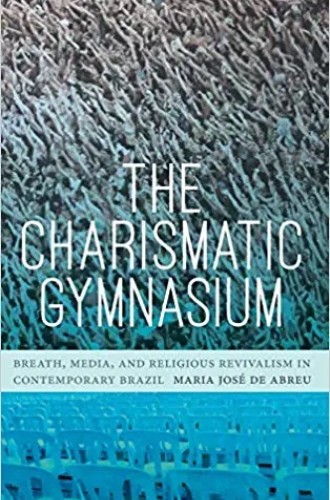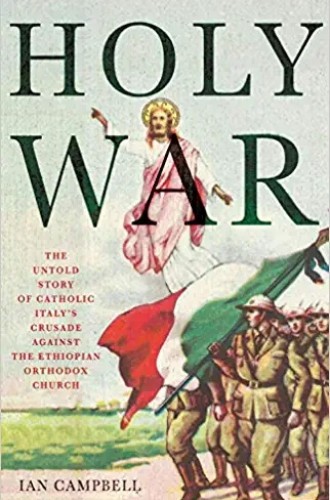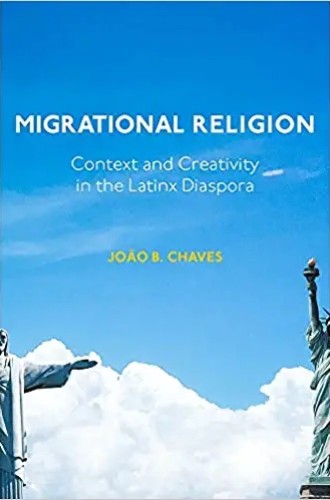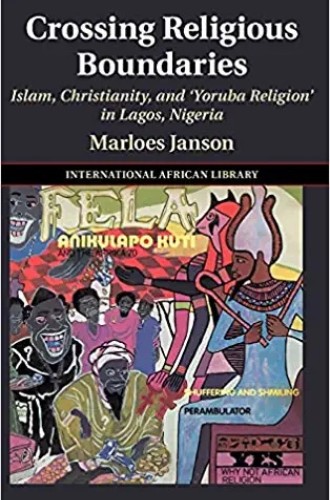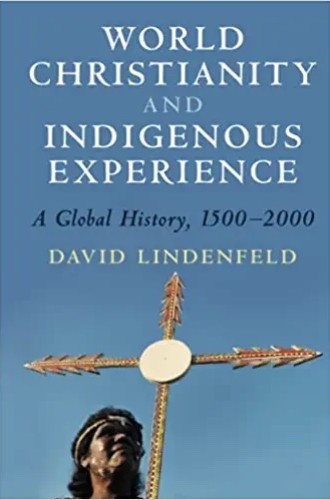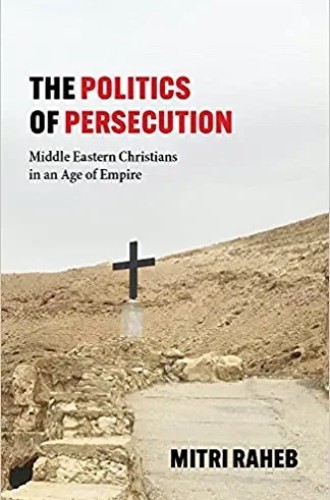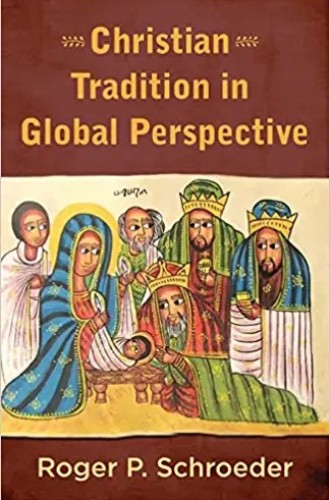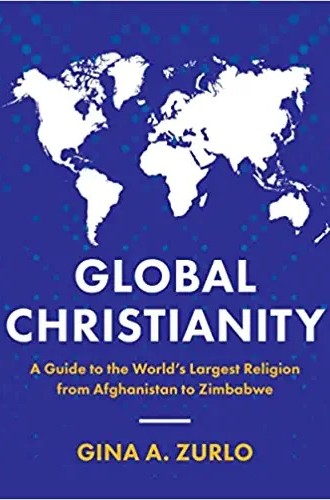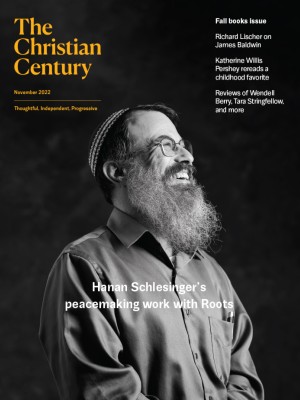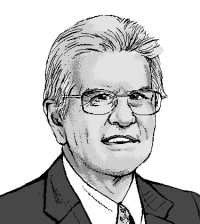Take & Read: New titles in Global Christianity
By Maria José de Abreu
Duke University Press
This is not the first book to discuss Brazil’s Catholic charismatic renewal, but it is assuredly the first to apply this particular approach. Working from the concept of pneuma, which connotes both breath and spirit, Maria José de Abreu studies the role of breathing human bodies in the culture and theology of pneumatic, Spirit-based faith. She makes innovative observations about the material environment of charismatic worship, including airy tents, arenas, and outdoor settings. Churches speak of “the aerobics of Jesus” and preach both physical and spiritual “body-building.” De Abreu links these beliefs and practices to the mass media world that is critical to Pentecostal success. (Are not such programs always “on the air”?) Her theoretical language may puzzle the uninitiated, but her insights are provocative and demand application beyond the Latin American context.
Holy War: The Untold Story of Catholic Italy’s Crusade against the Ethiopian Orthodox Church
By Ian Campbell
Hurst
Holy War is one of the most significant—and most chilling—books you are likely to read on global Christian history. It is well known that in the 1930s, Benito Mussolini’s fascist Italy launched a savage invasion of Ethiopia. Far less familiar is the fundamentally religious quality of this war, as a Catholic nation mobilized to swamp and destroy Ethiopia’s ancient Orthodox faith and culture. The Italian church justified this enterprise through the venomously race-based language of White European civilization confronting Black African primitivism. Ethiopian clergy and believers, meanwhile, suffered mass martyrdom. Scarcely less appalling than the horror stories recounted in this superb book is the fact that it has taken over 80 years for accounts of those atrocities to reach a wide audience in the West.
Read our latest issue or browse back issues.
Migrational Religion: Context and Creativity in the Latinx Diaspora
By João B. Chaves
Baylor University Press
Immigration has brought a wide range of Global South churches to the United States and Europe, and these congregations are growing and evolving quickly. João Chaves offers a case study of this phenomenon in his splendidly researched account of thriving Brazilian churches in the United States. Most are “Bapticostal,” a theological overlap that is fascinating in its own right. Chaves discusses the interplay with mainstream American culture and faith (which is manifested, for instance, in debates over female clergy). He describes the agonizing dilemmas facing undocumented church members. This is an excellent study of the pivotal topic of religion and migration, with enlightening comments on transnational networks, denominations, and leadership.
Crossing Religious Boundaries: Islam, Christianity, and “Yoruba Religion” in Lagos, Nigeria
By Marloes Janson
Cambridge University Press
Rarely is an ethnography of religion as fascinating and immersive as this one. Marloes Janson’s research setting is the rich religious environment of Lagos, where multiple faiths coexist, interact, and cross-pollinate on a daily basis. In the process, those faiths create the ultimate buyer’s market of spiritualities. Janson considers the daringly innovative “borderland” faith of Chrislam and the various means by which Islamic groups seek to absorb Pentecostal styles and practice, New Age currents such as the Grail movement and Eckankar, and the heroic attempts to revive traditional Yoruba belief for the modern era. Each chapter makes nonsense of some generalization or stereotype. After reading this book, you will think carefully about approaching any other work that focuses on a lone faith in isolation. The interplay is all.
World Christianity and Indigenous Experience: A Global History, 1500–2000
By David Lindenfeld
Cambridge University Press
Of making many books about missions and Christian expansion there is no end, and their triumphalism can make them a weariness of the flesh. The Indigenous recipients of these endeavors are generally portrayed as humbly grateful hearers of the message that is delivered to them. David Lindenfeld emphasizes the Indigenous experience across a range of responses, from grateful acceptance to bitter resistance and all points in between. His nuanced account is neither simply imperial in tone nor crudely and damningly anti-imperial. Particularly impressive is the range of examples and illustrations, which include the Nahua (Aztecs), the Cherokee and Sioux in North America and multiple peoples across Africa, Asia, and Oceania.
The Politics of Persecution: Middle Eastern Christians in an Age of Empire
By Mitri Raheb
Baylor University Press
The Politics of Persecution studies the plight of Christians in the Middle East from the 1790s until the present. Christians have often been identified as agents or allies of the empires that competed over these territories, and over the past two centuries, Christian numbers and influence have shrunk dramatically. Meanwhile, persecution and martyrdom have been distressingly commonplace. The recent Syrian civil war is only the latest in a series of horror stories. Mitri Raheb offers a trove of information and analysis, written in lucid and approachable terms, both for Christians fascinated by the Holy Land and for anyone interested in the emergence of the modern Middle East. Some readers might find parts of his argument controversial, especially discussions of the Israeli-Palestinian conflict, but Raheb is a thoughtful scholar whose views always demand respect.
Christian Tradition in Global Perspective
By Roger P. Schroeder
Orbis
Roger Schroeder has written an ambitious history of the church from its earliest days, aiming at wide transnational coverage and avoiding Eurocentric biases wherever possible. Although it is intended as a textbook, there is much to appeal to general readers. In keeping with its Catholic perspective, the book is organized around large themes and traditions that can be traced over time, even as cultural and political settings vary. These themes include liturgy and the sacraments, church organization and ministry, theological developments, and social and religious movements. Schroeder devotes serious attention to the role of monasticism in these processes. Each age, each Christian society, passes on the key tradition to its successor, and much of the book’s interest involves observing those moments of transition, of “traditioning” through time and space.
Global Christianity: A Guide to the World’s Largest Religion from Afghanistan to Zimbabwe
By Gina A. Zurlo
Zondervan Academic
At first sight, Global Christianity presents as a collection of data and material rather than a text to sit down and read. That is misleading. In covering so many nations, Gina Zurlo tells a story of the enormous diversity of Christianity around the world and the huge range of political, economic, and cultural conditions in which believers live. Readers of this book will never again succumb to facile statements such as “what people believe in Africa.” Zurlo’s book is in effect an accessible and affordable summary of the substantial World Christian Encyclopedia which is the indispensable resource for academics in this area. Those who dip in will do so repeatedly, noticing new connections and thirsting for further exploration.


